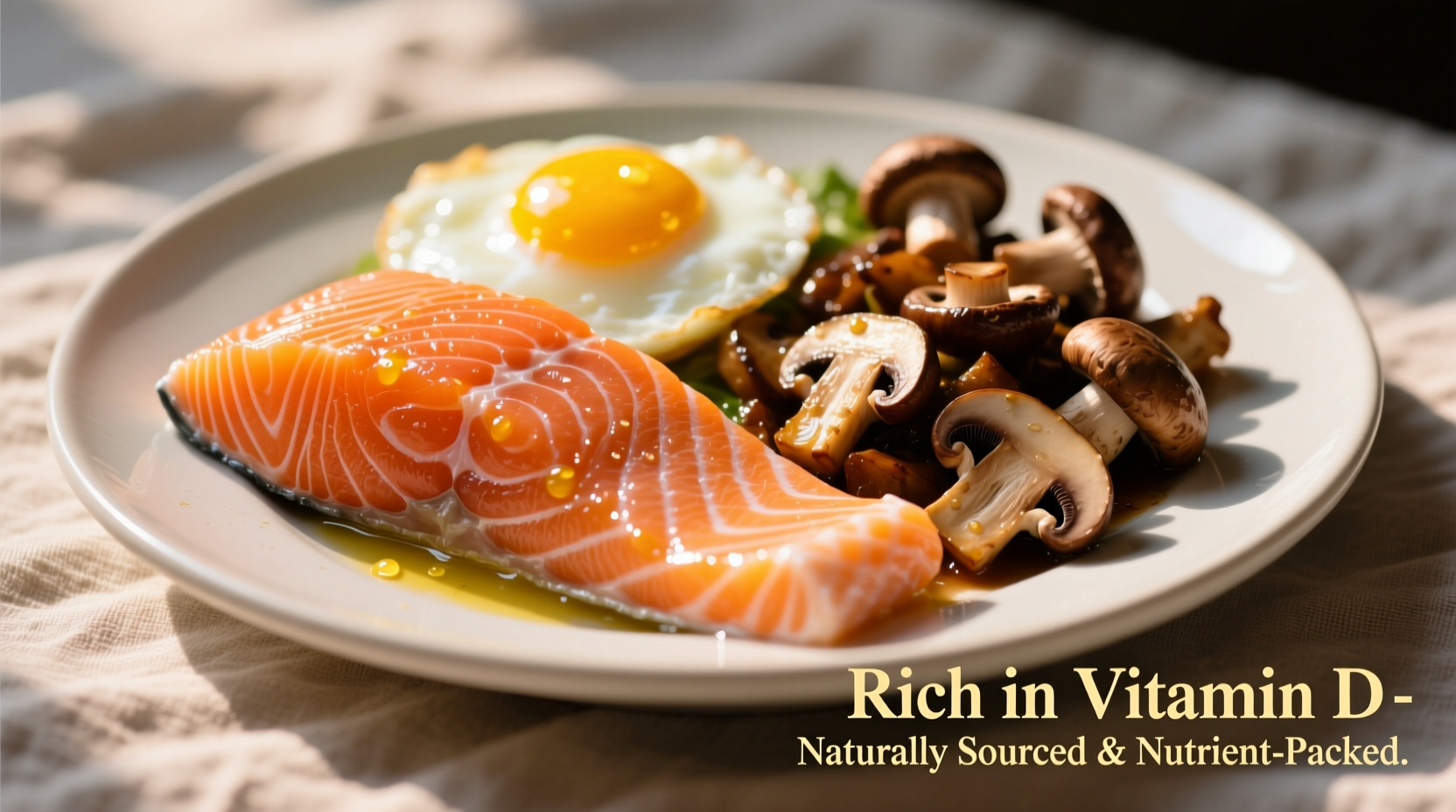The top natural food sources of vitamin D include fatty fish like salmon (447 IU per 3-ounce serving), mackerel (306 IU), and sardines (164 IU), along with egg yolks (44 IU), mushrooms exposed to UV light (up to 400 IU), and fortified foods such as milk (115-130 IU per cup), orange juice, and cereals. These foods provide essential vitamin D that supports bone health, immune function, and calcium absorption.
Discover how to naturally boost your vitamin D levels through everyday foods without supplements. This comprehensive guide reveals which foods deliver the most bioavailable vitamin D, how much you need daily, and practical ways to incorporate these nutrient powerhouses into your regular meals. Whether you're managing deficiency concerns or simply optimizing your nutrition, understanding these food sources can transform your health strategy.
Natural Vitamin D Powerhouses
Vitamin D is unique among vitamins because your body can produce it when your skin is exposed to sunlight. However, with modern indoor lifestyles and sunscreen use, dietary sources have become increasingly important. The most potent natural food sources come from animal products, particularly fatty fish that spend time in sunlight-rich waters.
Wild-caught salmon stands out as the champion food source, delivering approximately 447 IU of vitamin D per 3-ounce serving - that's over half your daily requirement in a single portion. Farmed salmon contains less (about 250 IU), demonstrating how an animal's natural environment directly impacts nutrient content. Mackerel follows closely with 306 IU per serving, while canned sardines provide 164 IU along with calcium from their edible bones.
| Food Source | Serving Size | Vitamin D (IU) | % Daily Value |
|---|---|---|---|
| Wild salmon | 3 oz | 447 | 56% |
| Mackerel | 3 oz | 306 | 38% |
| Sardines (canned) | 3 oz | 164 | 21% |
| Egg yolk | 1 large | 44 | 6% |
| UV-exposed mushrooms | 3 oz | 400 | 50% |
This comparative data from the USDA FoodData Central shows significant variation in vitamin D content based on food type and preparation method. Notice how wild-caught fish consistently outperform farmed alternatives, and how UV-exposed mushrooms can rival some fish sources - crucial information for vegetarians seeking plant-based options.

Fortified Foods: Your Daily Vitamin D Boost
For those who don't regularly consume fatty fish, fortified foods provide valuable alternatives. Milk has been fortified with vitamin D since the 1930s to combat rickets, delivering 115-130 IU per cup. Today, many plant-based milks like soy, almond, and oat varieties receive similar fortification.
Breakfast cereals often contain added vitamin D, with some providing up to 40% of your daily needs per serving. Orange juice fortified with vitamin D has become increasingly common, offering approximately 100 IU per 8-ounce glass. Always check labels, as fortification levels vary significantly between brands and product lines.
Vegetarian and Vegan Vitamin D Sources
For plant-based eaters, vitamin D presents unique challenges since few plants naturally contain this nutrient. The exception is mushrooms exposed to ultraviolet light, which can synthesize vitamin D2. Portobello, maitake, and shiitake mushrooms treated with UV light provide substantial amounts - up to 400 IU per 3-ounce serving.
It's important to understand the difference between vitamin D2 (from plant sources) and D3 (from animal sources). Research from NIH Office of Dietary Supplements indicates that D3 raises blood levels more effectively and maintains them longer than D2. This means vegetarians and vegans may need to consume larger quantities or consider fortified options to achieve optimal levels.
Practical Integration Strategies
Maximizing vitamin D absorption requires understanding how it works with other nutrients. Vitamin D is fat-soluble, meaning consuming these foods with healthy fats significantly enhances absorption. Try these practical combinations:
- Add avocado (healthy fats) to your fortified cereal instead of just milk
- Prepare salmon with olive oil rather than steaming plain
- Include eggs in vegetable stir-fries with sesame oil
- Pair fortified orange juice with a handful of almonds
Timing matters too - consuming vitamin D-containing foods earlier in the day aligns with your body's natural metabolic rhythms. Morning meals with fortified milk or afternoon snacks featuring UV-exposed mushrooms can provide steady nutrient delivery throughout your day.
When Food Sources Aren't Enough
While dietary sources are valuable, certain factors may require additional approaches. People living above 37 degrees latitude north or south often experience seasonal vitamin D deficiency during winter months when sunlight exposure is insufficient for natural production. Those with darker skin tones need longer sun exposure to produce equivalent vitamin D levels due to melanin's protective effects.
Individuals with malabsorption conditions like Crohn's disease, celiac disease, or those who've had gastric bypass surgery frequently require supplementation despite optimal dietary intake. Always consult with a healthcare provider for personalized recommendations, especially if you experience symptoms like fatigue, bone pain, or frequent infections that might indicate deficiency.
Maximizing Your Vitamin D Intake
Building a vitamin D-rich diet doesn't require drastic changes. Start with these simple steps:
- Include fatty fish at least twice weekly - try canned salmon in salads
- Choose fortified dairy or plant milks for coffee and cereal
- Seek out UV-exposed mushrooms at specialty grocers
- Enjoy egg-based breakfasts 3-4 times weekly
- Check labels on cereals and juices for vitamin D content
Remember that consistency matters more than perfection. Regular consumption of even moderate vitamin D sources creates meaningful cumulative benefits. Pair these dietary strategies with sensible sun exposure (10-15 minutes of midday sun several times weekly) for optimal results.











 浙公网安备
33010002000092号
浙公网安备
33010002000092号 浙B2-20120091-4
浙B2-20120091-4